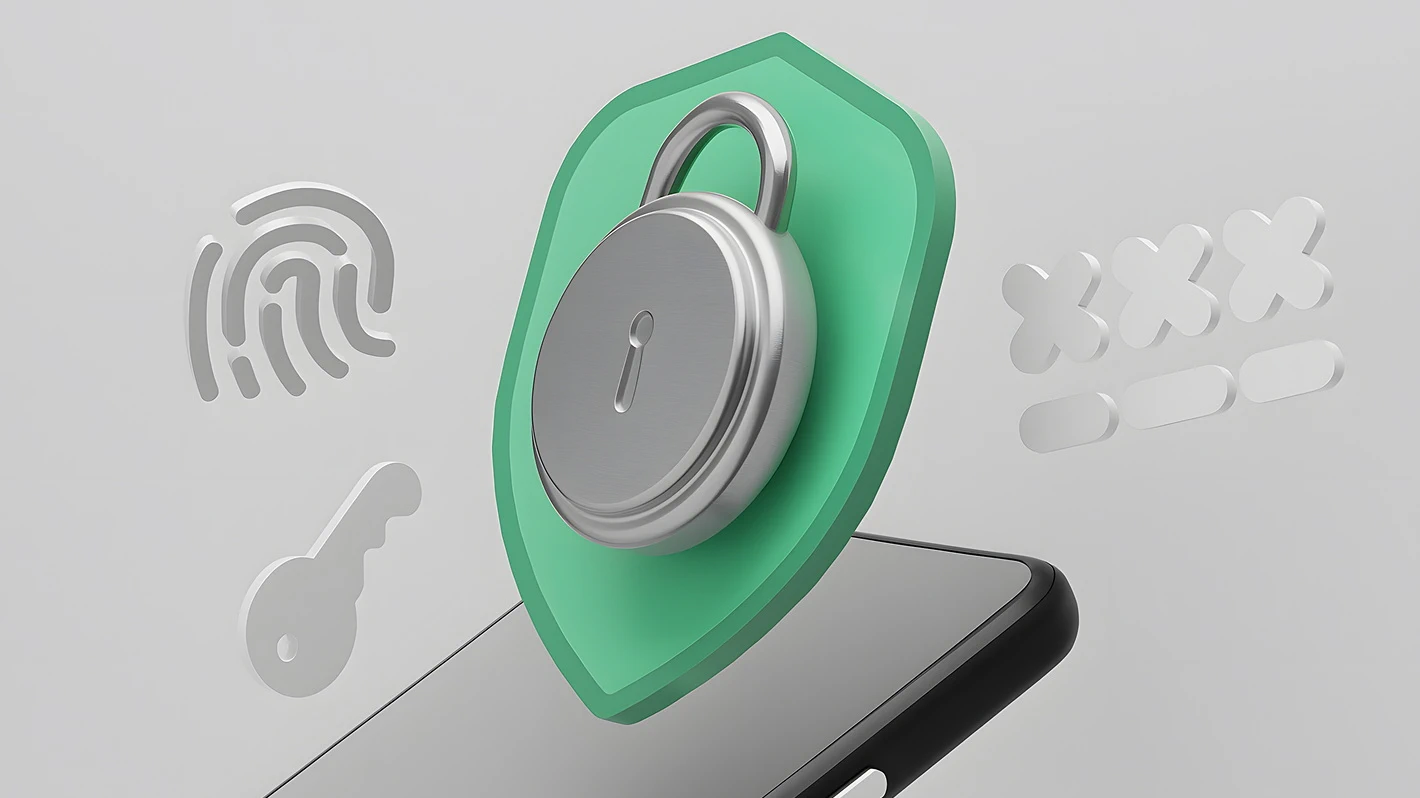The benefits of a well-structured customer care plan are essential as they assist in retaining customers and creating loyal brand ambassadors, both of which are essential to the long-term success of your business.
The survival rate of small businesses is approximately 50% at the five-year mark. This is according to research conducted by the SBA’s Office of Advocacy. This means that small businesses today need to ensure they are doing everything it takes to stay on track and survive.
One of the best ways to ensure this survival is through continued customer satisfaction as this leads to customer loyalty and brand ambassadors. But customer loyalty is a difficult land to navigate as there are just so many variables that can negatively impact the customer experience.
For this reason, as a business owner, you need to ensure you are effectively managing the customer experience, both positive and negative, and one of the best ways to achieve this is with a well-structured customer care plan.
This plan acts as your road map through the murky waters of customer satisfaction and will help you effectively assess your progress at all stages.

Why A Customer Care Plan Matters
Your customer care plan defines the strategy you as an organization use to treat customers when they interact with your brand. It is fully comprehensive, detailing all experiences from the start of their purchase journey right through to the end.
The reason for this plan is simple. Customer care is an essential component of any business. It is what builds the emotional connection your customers hopefully come to enjoy with your brand and your brand’s community.
When defining your customer care plan it is important to understand the difference between customer service, customer relations, and customer care. A true customer care plan looks beyond the metrics used to measure success and looks to rather invest in the concept of supporting your customer’s goals and needs.
While measurement is indeed important, you will fail to form the right level of emotional connection with your customer base if you are too focused on its measurability. It is less quantifiable than, for example, customer service and places high emphasis on one-on-one interactions with customers.
Here are some 10 points to consider when creating your customer care plan.
Know your product
Excellent customer care is evident when you are able to provide the perfect solution to your customers’ needs. Customers feel valued when you take the time to learn their business and can show an understanding of what their requirements are, and how your product or service can best assist them
This is only achievable when you have a sound understanding of your products, and those of your customers, and when you are then able to marry these together into the right solution. Showing insight and understanding of how your products can best assist customers and meet their needs will place them at ease and establish a firm foundation of trust and loyalty for you and your business.
Part of your product knowledge lies in knowing which products are performing well and which are not. A good understanding of your company and product financials will soon highlight the areas of concern and show you where you can maximize sales.
Insight into these areas places a spotlight on just where your focus should lie, what products need higher levels of focus, and which services need re-structuring. This knowledge allows to you align your customer care strategy accordingly thereby placing more effort on product solutions to build your company.
Know Your Customer
Another important step to consider when planning your customer care plan is attention to the customer. Any business owner will agree that, in order to be successful in business, a company needs an intimate working knowledge of each customer in their client base.
To serve your customers effectively, you need to know your clients – well. This can be achieved by really taking time to listen to your current customers and to what their needs and requirements are.
There are various ways to get this done. Customer interviews, surveys, and client reviews are all great tools you can use to assist you in developing some client value buckets for your customer pool. While you should constantly be updating the data you source, reverting back to stored and archived customer data is also a valuable exercise and the marrying of these information sources could result in a well-rounded customer profile.
It is important, at this stage to plan how you will manage the data you collect. The data is only as effective as the plan used to manage and use it. Customer analytics are invaluable and serve to help you structure the right way forward for your various customer bases.
Understanding the data, pulling it into your customer care plan, and using it to formulate customer campaigns will have a direct impact on your customer service levels and will see your customers believing you know them and what they need.

Evaluate Your Current Process
Once you have begun the process of collecting this data you can turn your head inwards and focus on internal customer processes and operations. You can make this process as visual as you want. Developing process plans, charts and diagrams add visual elements to your plan – these give an excellent bird’s eye view of your process and the customer experience.
Making it visual encourages brainstorming, and when you sit with your team to discuss processes and findings, these visual elements will spur discussion and encourage engagement. Make this a team effort, allowing various team members to draw, write and add to what you are developing.
Customer feedback may not be easy to see in your daily operations. This visual demonstration provides a great opportunity to view things from your customer’s perspective. What are they experiencing in their sales journey with your company Where could their frustrations lie? Where are the areas you can improve on? What is working well? These are all questions you will be able to assess and answer during this stage.
Be sure to identify your customer’s touchpoints so that you can effectively build their buyer profiles. This will provide a great way to analyze their interactions and elicit feedback. Some areas you can focus on here include questions about how often they buy from you; which channels they use, how often they contact you, and what their requests entail.
Rank Your Findings For Accurate Feedback
This next step could potentially be the most difficult to achieve. It involves a calculated look at your performance. After analyzing the data collected in the first two steps, you now have an opportunity to rate your own performance. Create a list of all the customer care areas identified in your research stage and then carefully assess each one.
Rank them in order of importance and current performance level. This will give you clear insight into the areas you need to focus on and the areas that work well. Form here, you can create a ‘To-Do’ list of actionable items where improvement is needed.
This provides a great base for a team strategy meeting at this point. Invite your team to participate in developing product and service strategies for each item flagged. These strategies could include items like:
- Redesigning workflows to streamline operations
- Upgrading software for a more ‘work-smarter’ approach
- Training initiatives for employees related to customer care strategies
Finally, make use of social media. Create posts to encourage feedback and engagement in order to get your customers talking.
Once you have put in all this work, be sure to keep the momentum going. Schedule a call back with your customers at a later date so that you can be sure to keep this data updated. Creating a consistent feedback loop helps you build a structured customer care foundation you can build from.
Be Proactive with Your Customer Care Strategy
Customer care is the specific attention to detail that ensures you as a company makes the first move in your relationship with your customers. In this way, they feel supported and believe you are truly invested in their well-being and needs.
This can be achieved in various ways and could include reaching out with information on new products they could benefit from, being transparent when it comes to errors that could crop up, and merely going out of your way to foster that relationship with them through regular check-ins.
This proactive approach to your customer relationships serves two very specific purposes. Firstly, it solves any issues the customer may be experiencing with minimal disruption to them, and secondly, it constantly introduces solutions geared towards enhancing the customer’s operations.
The direct spin-off of a proactive customer care strategy is increased trustworthiness and customer loyalty. Two aspects that are as valuable as gold, and that any company should be striving for within their customer base.
It is, however, only in an ideal world that all customer care will happen proactively. The reality is that there will, at times, be customers who start communicating from a negative perspective. They may feel let down in some way. This more reactive approach is equally as valuable and can still be navigated towards a positive outcome.
Don’t Be Scared of What the Feedback Will Be
Companies often shy away from criticism or negative feedback. They close the door on it hoping it will go away and spend their time focusing on the glowing reviews they receive. They forget that their success is measured by the holistic view of the entire customer base and not merely from the success stories of half of them.
It is the feedback that matters. Positive or negative, this is all feedback you want, and part of your customer care plan needs to be to define the ways in which you will capture this feedback.
Questionnaires are a great way to elicit feedback. These are some of the best ways to stay on top of issues. Questions like:
- “What could we have done more of?”
- “In what ways could we have improved your shopping experience with us?”
Give tremendous insight into areas you need to constantly be focusing on.
Proactive customer care can also take the form of FAQs on your website, or as a regular feature in a newsletter, you distribute to your customer base. These can link back to video tutorials and, expert advice on issues your customers could encounter. You can support these services with a link to customer care consultants should your customers need additional support.
Give Them What They Need Before They Know They Need It
Your customers are not necessarily in the know about a new product you are launching and so, a “New Products” or “Products You May Like,” feature is always a good idea. It brings new and relevant information directly to the customer, removing the need for them to do unnecessary (and often time-consuming) searches.
These searches can be customized based on analytics gathered and should not ever take the form of random bulk mailers. These do little more than frustrate customers. If you have something to say to them, make sure it is valuable and customized.
Other proactive strategies you can employ include:
- Email newsletters
- Automated SMS product scheduling service for regular maintenance of products
- Staying on top of feedback that is directed through your various social media platforms
Pay Attention to Customer Satisfaction
Employee job satisfaction plays a part in your overall customer care plan. “How”, you may ask. Simply put, says a new study from the University of Missouri, CEOs who pay attention to employees’ job satisfaction can boost both customer satisfaction and “repurchase intentions”.
Once you know your employees are happy and working towards the common goal of customer satisfaction, you can drill down into some other areas to reach this goal. You want your customers to be your greatest advocates because word-of-mouth recommendations are a springboard to success for any business today.
While the new catchphrase “customer-centered” is becoming more prevalent in discussions today, the reality is that most companies still don’t do much to develop this model in their organizations. What these companies fail to realize is that customer satisfaction is the one area that will see them move streaks ahead of their opposition.
In fact, according to a study completed by the Peppers & Rogers Group, 81% of companies that provide great customer experiences and customer satisfaction do much better than their competitors.
How To Improve Customer Satisfaction
Some ways you can improve customer satisfaction in your company include:
- Start a customer loyalty program
- Understand the importance of word-of-mouth and work towards the best results
- Help your customer all in love! Companies that are passionate about their products share passionately about their products. This passion is contagious – remember that!
- Develop a customer retention strategy
- Be efficient on your social media platforms. Customers appreciate quick feedback and companies that ignore social traffic run the risk of losing customers.
Customers consider switching to opposition brands after just one negative encounter with a company! That is a scary thought. Customer satisfaction is important because it is the one defining factor that will see your customers stay or leave to join your opposition. It is worth paying attention to.

Track Your Customer’s Needs
When looking at your customer care plan, and defining your strategy you need to take time to consider the topic of customer needs. These needs are the influencing factors that will determine if your customers will choose to buy from you are not. They are important!
A careful understanding of your customer’s needs matters because it will give you tremendous insight into their decision-making process. This process starts by defining your target market and then segmenting them into groups based on the characteristics and attributes you define. These criteria should relate to your business and products.
When completing this process, you should take time to:
- Identify the needs
- Categorize these needs to the relevant departments and teams
- Create tailor-made product and service offerings for the relevant buyer-groups
- Collect and analyze customer feedback on a regular basis
- Tweak offerings to get them in line with the feedback received
The fact is that 76% of customers expect companies to understand their needs. This places enormous pressure on companies to remain one step ahead and anticipate a customer’s needs. Something that can only be achieved with a structure, proactive and ever-changing customer-care plan in place.
The Benefits Of Tracking Your Customer’s Needs
When it comes to tracking customer needs, there are additional benefits. These include:
- The ability to fast-track solutions and solve problems in real-time
- The opportunity to improve products and services regularly
- The opportunity to reduce service tickets and not operate reactively
Some additional ideas for tracking customer needs include:
- Conducting customer interviews to gather insight
- Collaborating with customers in focus groups
- Distributing surveys for regular feedback
Areas that you should focus on when conducting this research regardless of the platform used include:
- Price of product and services
- Features of products and services
- Effectiveness
- Service level
- Empathy levels of the company
- Clarity around products and services offered
- Support received through information-sharing. Do they feel empowered?
Invest in Your Customer Care Toolkit
There are various tools today that can assist you as a company in achieving your customer care goals. These should be considered when you are formulating your strategy for the simple reason that they will make your life easier.
One such technology is the inclusion of chatbot technology into your customer care offering. This technology is revolutionizing customer care levels for companies. This is primarily due to the fact that these bots operate 24/7, thereby extending your operating hours.
So how do they work? In most cases, companies program pre-written instructions for common, or frequently asked questions, into the bot. These bots will then converse with clients in a conversational manner when these queries occur.
While there may be companies that are uncomfortable at first with the idea of replacing these traditionally human interactions with an automated bot, the reality is these bots are able to serve a very specific purpose and extend your customer service offering rather than detract from it.
When implemented correctly, these bots will enhance your customer communication levels, expedite responses to customers and serve as an excellent backup in your customer interactions.
And the results speak for themselves. Numbers are climbing and as many as 69% of Americans say they use a chatbot at least once a month, while 44% say they prefer dealing with the chatbots when it comes to customer service!
One time where the benefits of these chatbots are particularly evident is in peak operating ties. Customer care agents can encounter queues of customers needing assistance at these times, and call-waiting times can be lengthy. Chatbots are able to streamline this process, reducing queues and assisting customers who have less complex issues to resolve.
Explained practically, a customer service bot could be programmed to access your customer relationship management (CRM) database. It could then determine the more routine queries and also if the query is from a new or existing client. Your bot can then suggest various prompts for the client, depending on what data it collects.
Remember that chatbots can’t resolve all customer issues and so this technology is not something to structure all your customer care needs around. Skilled agents should still be employed to deal with the more complex customer issues that arise. When not used correctly, these chatbots can lead to customer frustration and will end up doing more harm than good.
The purpose of a chatbot is to enhance your offering and extend your reach when it comes to customer care. When establishing to operate in this way, chatbots are providing excellent customer care solutions to organizations around the world.
As they are omnichannel, bots can be used across your platform thereby giving legs to your customer care strategy and ensuring more issues are dealt with and resolved daily. Companies using this technology soon find their agent’s productivity increases as they are no longer overloaded by customer interactions and are able to spend more time assisting customers with more complex concerns.
Bots Can Learn Too
Now that we have discussed the basic concept of the bots and how they work, let’s take things a step further. Due to the fact that bots are continually processing information from interactions, they are able to convert these findings to meaningful insights.
As this technology improves through the years, studies are finding that these bots are starting to understand people’s language, nuances, and different ways of phrasing questions. As your bot gains information, it learns what the best response to a situation will be. In essence, it refines its customer care response!
Helpware’s AI operations are no different. They provide AI business process outsourcing giving you the humans in the loop. This ensures accurate data from Image Processing, Video Annotation, Data Tagging, Data Digitization, and Natural Language Processing (NLP).

Why Email Support Matters
Chatbots serve a purpose, but companies need to consider other tools to assist in their overall customer care strategy. This is for the simple reason that email is pivotal to most businesses today and is a common form of communication, one that most people are comfortable with.
Forrester Research states that, 77% of customers expect a company to value their time and that this is achieved through positive and effective online customer service. Adding to this, Hubspot cites that 90% of customers expect an immediate response to their queries, and by immediate they mean 10 minutes or less!
These stats give credence to just how important communication – and online communication – is for customers. Historically, customer care agents have struggled to stay on top of the sheer volumes of emails coming their way. The natural slow-down in service this brought did little more than add to the negative perceptions customers may already have been feeling.
It also shows, however, just how important this email communication is with customers – still today. Companies are therefore left with few options other than to give attention to their email support chains. Email response management systems are providing solutions to the gremlins of the past and addressing the challenges felt.
Adding email support software to your customer care offering adds to the proactive approach you are developing.
Invest in Your Team
As we have already discussed, customer care is a crucial component of any business today.
It adds to customer retention and enhances your value proposition. One of the best ways to invest in your customer care plan is through customer service training and investing in your staff.
Professional and well-trained employees lead to happy and content customers.
This training involves coaching and mentoring employees who deal with your customer base. This is training that focuses specifically on how to learn product information, how to use the customer service software at their disposal, and how to be active, present, and engaging across all platforms.
There is no way around this as employees without the correct training will find themselves in difficult situations with customers sooner rather than later and their lack of training will be all too evident.
An added benefit is that studies are starting to show all too often how ongoing training leads to higher levels of job satisfaction for employees. This, in turn, leads to positive customer interactions and a happy customer base.
Companies that are leading the way are investing time and money into training their support staff correctly. This is for the simple reason that they know just how effective this investment will be on their bottom line. Empowering their staff to use the tools at their disposal well, reaps maximum reward and improves productivity.
This training should extend past the immediate and always take into consideration the bigger picture. While your support staff may only need training on certain tools at the moment, providing omnichannel training will boost your customer care offering and set the scene for excellent customer service.
You may still be wondering why this intense focus on training is required for your staff. The reality is that customers who encounter excellent service will transcend into repeat customers. This is, and will always be your end goal.
There will never be any doubt that exceptional customer service has a direct effect on customer loyalty and exceptional training only comes from exceptionally trained employees.
You may be wondering what to consider when setting up your employee training plan. Here are a few pointers:
- Hire problem-solvers
- Establish a training schedule that covers software training as well as soft skills pertaining to observing the client
- Encourage active listening and provide training
- Talk to your employees and listen to the challenges they are experiencing. Establish training times to cover these issues
- Model empathy and listening. This is a great way to build a culture of listening and empathy in your business. Two aspects that benefit customer care considerably.
Set Smart and Achievable Goals
Setting SMART goals for your customer care plan is a great step in the right direction. Companies that are vague and unstructured in their goal-setting objectives soon lose focus.
SMART goals stand for goals that are:
- Specific
- Measurable
- Attainable
- Relevant
- Time-bound
Setting goals paves a direct path for your company and your team. It gives everyone a marker to check so they can ensure they are working towards the right end result. They keep a team focused and lead to independent working habits and empowerment of your employees. Goals manage performance effectively and facilitate excellent feedback across the board.
Most importantly, they align an organization’s thinking and bring a team together.
SMART goals are generally time-bound, meaning they don’t all hold the same levels of importance. For this reason, if deciding to use the SMART goal methodology, you need to ensure you stick to the structure and guidelines.
In keeping to the SMART format, you will have a great way of keeping your goals measurable, specific, and in line with your overall (and pre-defined) mission and vision.
There are many reasons for setting SMART goals. These include:
- With a direct objective of increasing customer satisfaction
- To reduce customer waiting times
- Enhance the quality of your customer-service
- Improve overall employee happiness
- To improve the trouble-shooting process in your company
- Improve skills development and leadership opportunities
Stick to the Plan
When establishing your customer care plan you need to commit to this plan. Plans that change on a regular basis, without time to reach the goals set become difficult to measure. When you can’t measure your goals effectively you struggle to see the impact this plan has had.
For this reason, you need to stick to the customer care plan you develop and you need to be prepared to stick with that plan for the required amount of time.
There are many ways you can ensure you keep this plan on track. Start by having regular meetings to discuss this plan and the progress and hurdles encountered. These meetings are a good reminder of the overall objectives and goals and will help you as a team to stay on track.
These meetings are a great time to brainstorm ideas and suggestions to help you achieve these long-term goals. Be prepared for these meetings and plan effectively. Create an agenda to prompt discussion and minute the meetings to prompt action items and to keep the momentum going.
Another great way to ensure your customer care plan stays on track is to formulate a budget at the start. This may need to be a living document that changes from time to time. It should take into account any expenses you foresee within this plan. These should include software, training, and hardware costs. If these costs change, or if you discover more solutions you would like to adopt, be sure to include these updates on the budget as you move forward.
Set milestones. Micro-achievements are a great way to keep momentum within your bigger plan. They serve to encourage and excite team members and will naturally spur productivity towards the final goal.
When creating your overall customer plan, you may want to consider developing sub-committees or teams to deal with various items. These teams should be expected to report back at each meeting so that you can track progress and ensure your plan is developing in line with the deadlines set.
Any plan you set is worth the time required to see results and no plan will yield results immediately. Be prepared for a long journey to your final goal and have the strength required to stick to that plan.
Channeling this feedback into a well-defined customer care plan will help you achieve your overall goals for success. A good customer care plan is a fine balancing act of many variables and the management of this plan takes time and dedication. Helpware can assist you with the development of your customer care plan and customer service management. Give us a call today and let us help you take your customer satisfaction levels to new heights!
Conclusion
Customer service is key to the success of any business and a customer care plan is one of the best ways to achieve proactive and positive customer service.
While customer feedback may be a scary prospect for you as a business owner, it is the fastest way to track the progress of your business. Negative customer feedback can be brutal, but it is usually also accurate and gives cutting insight into the areas of your business you need to work on. In reverse, positive feedback serves to encourage and show you where you are getting things right as a company.












